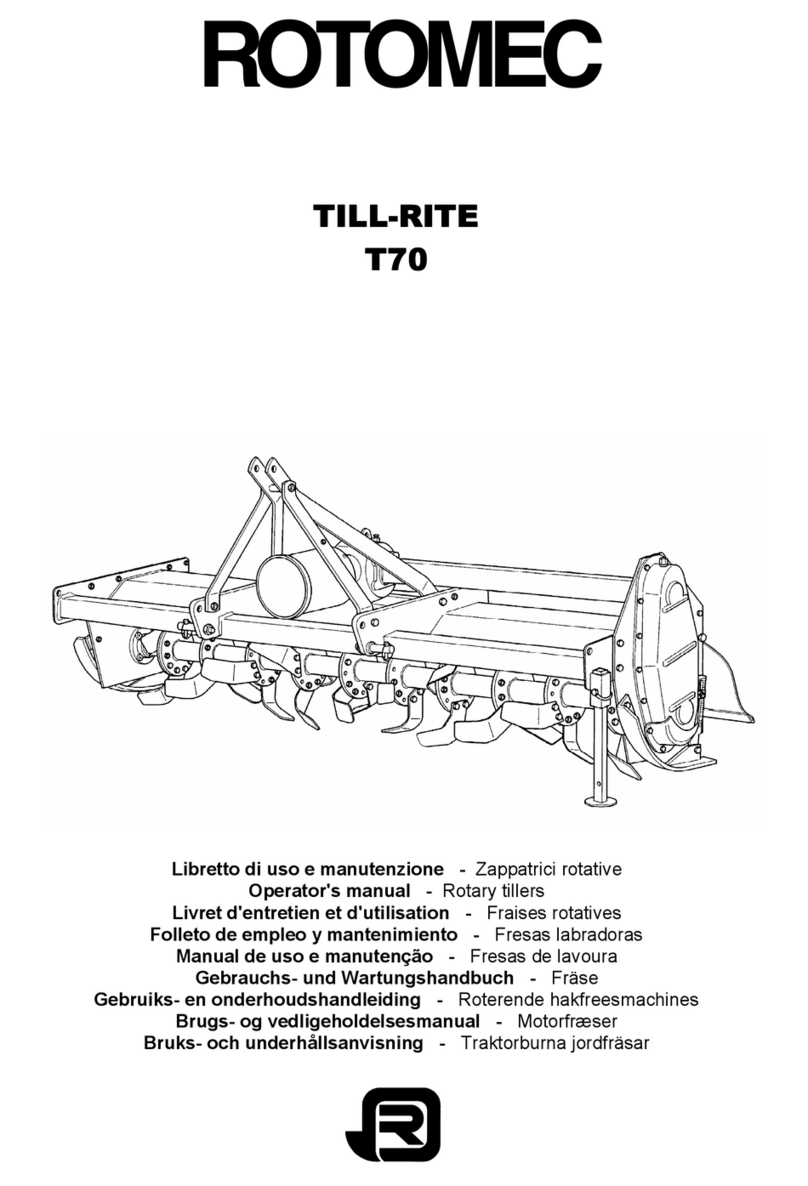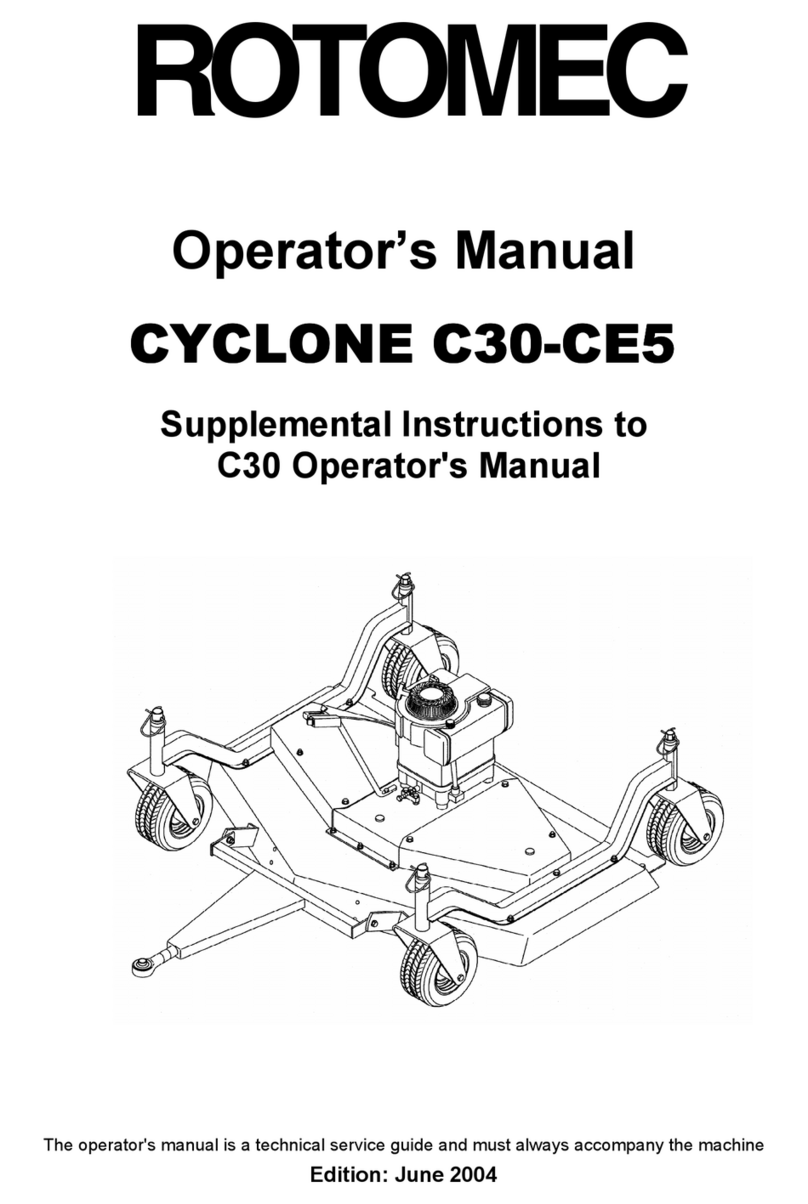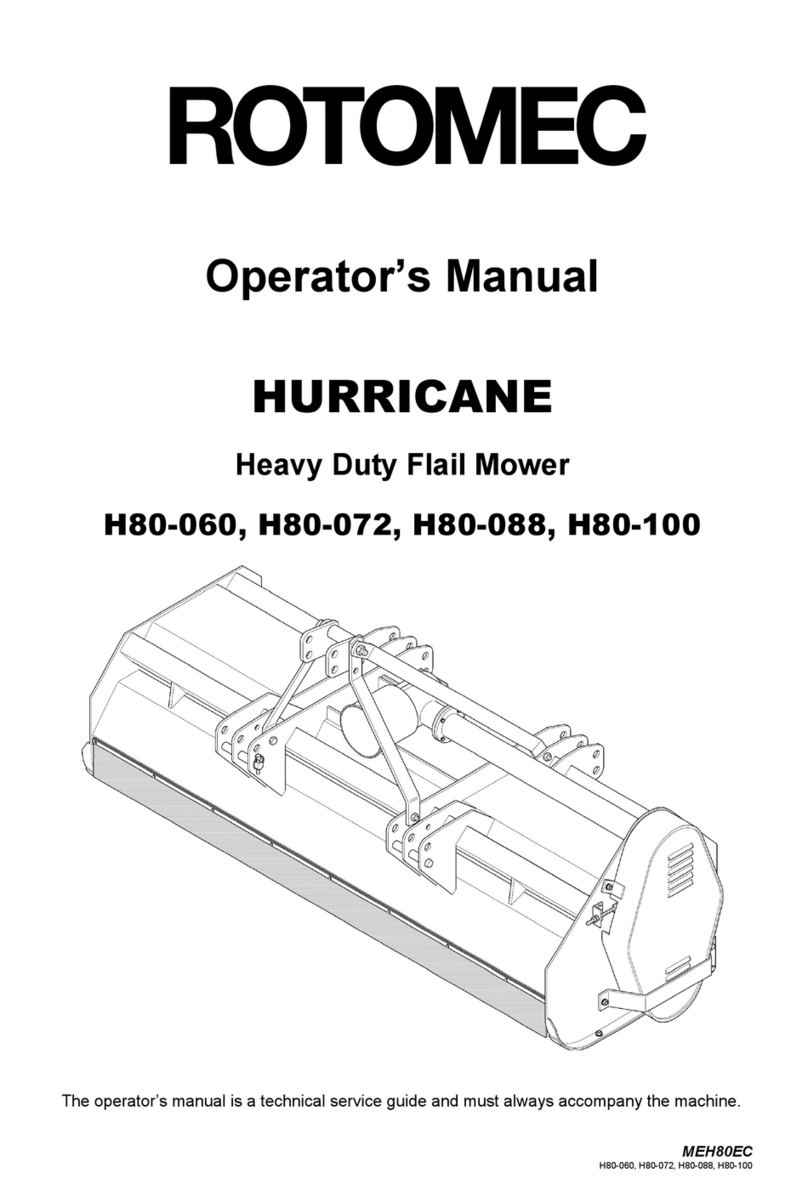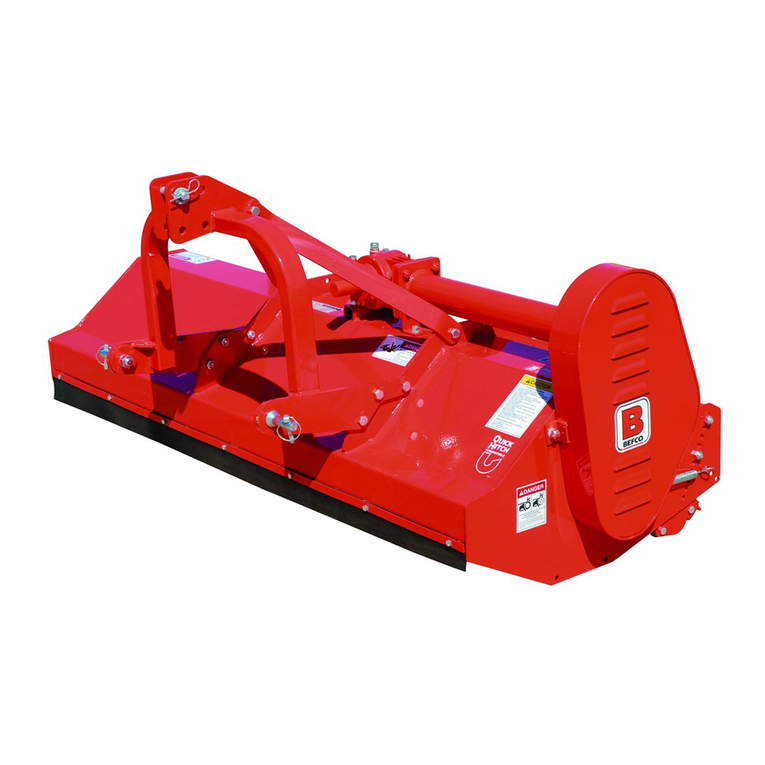
2 - SAFETY PRECAUTIONS
Safety is the primary concern in the design and manufacture of our products.
Unfortunately our efforts to provide safe equipment can be wiped out by a single
careless act of an operator.
In addition to the design and configuration of equipment, hazard control and accident
prevention are dependent upon the awareness, concern, prudence and proper training
of personnel involved in the operation, transport, maintenance and storage of
equipment. It is the operator’s responsibility to read and understand all safety and
operating instructions in the manual and to follow these.
Allow only properly trained personnel to operate the implement. Working with unfamiliar
equipment can lead to careless injuries. Read this manual, and the manual for your
tractor, before assembly or operation, to acquaint yourself with the machines. It is the
owner’s responsibility, if this machine is used by any person other than yourself, is
loaned or rented, to make certain that the operator, prior to operating, reads and
understands the operator’s manuals and is instructed in safe and proper use.
2.01 - Preparation
1. Before operating equipment read and understand the operator’s manual and the
safety signs (see fig. 5).
2. Thoroughly inspect the implement before initial operation to assure that all
packaging materials, i.e., wires, bands, and tape have been removed.
3. Personal protection equipment including hard hat, safety glasses, hearing protection,
safety shoes, and gloves are recommended during assembly, installation, operation,
adjustment, maintaining and/or repairing the implement.
4. Operate the implement only with a tractor equipped with an approved
Roll-Over-Protective-System (ROPS). Always wear your seat belt. Serious injury or
even death could result from falling off the tractor.
5. Clear area to be worked of stones, branches or other debris that might be thrown,
causing injury or damage.
6. Before beginning operation, contact local utility companies to make certain there are
no bundled gas lines, electrical cables, etc., in the work area.
7. Operate only in daylight or good artificial light.
8. Ensure implement is properly mounted, adjusted and in good operating condition.
9. Ensure that all safety decals are properly installed and in good condition.
SAFETY PRECAUTIONS 10 olqljb`
HAY RAKES OPERATOR’SMANUAL
































